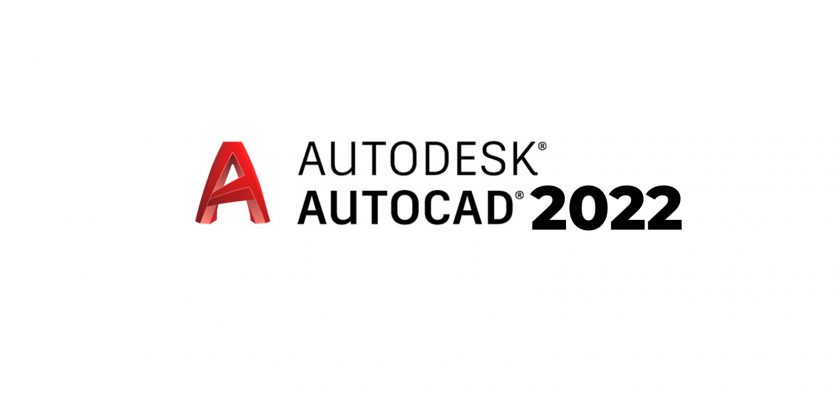AutoCAD 2022 enables you to create and explore ideas like never before. It is all you need to create, visualize, document, and share your ideas. From conceptual design through drafting and detailing.
Import a wide variety of other formats including SolidWorks, Pro/ENGINEER, CATIA, Rhino, and NX. Drawing views, edge display, and location are instantly updated when an engineering change is made.
Here are some Key features of “AutoCAD 2022”:
Save time with the specialized toolsets
Across seven studies, the average productivity gain was 63% for tasks completed using a specialized toolset in AutoCAD.*
Architecture toolset, Mechanical toolset, Map 3D toolset, MEP toolset, Electrical toolset, Plant 3D toolset, Raster Design toolset, and etc
Seamless connections with the web and mobile apps
Enjoy a connected design experience across AutoCAD on virtually any device. View, edit, annotate, and create drawings on the go using the AutoCAD mobile app or from your web browser on any computer using the AutoCAD web app.
Workflows
See how the specialized toolsets included with AutoCAD can save you valuable time.
AutoCAD + Architecture toolset
– Speed up your architectural design process with the Architecture toolset included with AutoCAD.
AutoCAD + Mechanical toolset
– Create mechanical designs faster using the Mechanical toolset included with AutoCAD.
AutoCAD + Electrical toolset
– Save time on electrical designs with the Electrical toolset included with AutoCAD.
Here are some Key Features of “AutoCAD 2022”:
Experience enhanced automation with AutoCAD 2022
AutoCAD® 2022 software includes industry-specific toolsets, an improved connected experience across platforms and Autodesk products, and new automations such as Count.
– Architecture toolset
– Mechanical toolset
– Map 3D toolset
– MEP toolset
– Electrical toolset
– Plant 3D toolset
– Raster Design toolset
Trace
Safely review and add feedback directly to a DWG file without altering the existing drawing.
Count
Automate counting blocks or geometry with the COUNT command.
Share
Send a controlled copy of your drawing to teammates and colleagues to access wherever they are.
Push to Autodesk Docs
Push your CAD drawing sheets as PDFs to Autodesk Docs from AutoCAD.
Floating windows
Pull away drawing windows to display side by side or on multiple monitors, in the same instance of AutoCAD.
Performance enhancements
Experience faster performance, including when plotting and for 3D graphics.
Recent enhancements
Drawing history
Compare past and present versions of a drawing and see the evolution of your work.
Xref compare
Compare two versions of a DWG including from external references (Xrefs).
Blocks palette
View and access your blocks content from AutoCAD on desktop or within the AutoCAD web app.
Quick measure
Display all nearby measurements in a drawing simply by hovering your mouse.Desktop view of a drawing overlaid with a dialog box listing DWGs stored in the cloud with AutoCAD
Cloud storage connectivity
Access any DWG™ file in AutoCAD with Autodesk’s cloud, as well as with leading cloud storage providers.
AutoCAD anytime, anywhere
Create, edit, and view CAD drawings through the browser using the AutoCAD web app or through the AutoCAD mobile app.
2D drafting, drawing, and annotation
Text settings
– Create single or multiline text (mtext) as a single text object. Format the text, columns, and boundaries.
Dimensions
– Create dimensions automatically. Pass the cursor over selected objects to get a preview before you create it.
Leaders
– Create leaders with a variety of content, including text or blocks. Easily format leader lines and define styles.
Centerlines and center marks
– Create and edit centerlines and center marks that automatically move when you move the associated objects.
Tables
– Create tables with data and symbols in rows and columns, apply formulas, and link to a Microsoft Excel spreadsheet.
Revision clouds
– Draw revision clouds around new changes in a drawing to quickly identify your updates.
Views
– Save views by name to easily return to a specific view for quick reference or for applying to layout viewports.
Layouts
– Specify the size of your drawing sheet, add a title block, and display multiple views of your model.
Fields
– Use fields in text objects to display text that can be updated automatically as the field value changes.
Data linking
– Enable simultaneous updates by creating a live link between a Microsoft Excel spreadsheet and a table in your drawing.
Data extraction
– Extract information from objects, blocks, and attributes, including drawing information.
Dynamic blocks
– Add flexibility and intelligence to your block references, including changing the shape, size, or configuration.
Arrays
– Create and modify objects in circular or rectangular patterns, or along a path.
Parametric constraints
– Apply geometric and dimensional constraints to maintain relationships between drawing geometry.
Purge
– Remove multiple unneeded objects at once with easy selection and object preview.
3D modeling and visualization
Solid, surface, and mesh modeling
– Create realistic 3D models of your design using a combination of solid, surface, and mesh modeling tools.
3D navigation (orbit, ViewCube, wheel)
– Use 3D viewing and navigation tools to orbit, swivel, walk, and fly around a 3D model to showcase your design.
Visual styles
– Apply visual styles to control the display of edges, lighting, and shading of your 3D model.
Section planes
– Create section planes to display cross-sectional views through solids, surfaces, meshes, or regions.
Rendering
– Apply lighting and materials to give your 3D models a realistic appearance and to help communicate your designs.
Cloud rendering
– Render 3D models online without consuming processing power or disk space on your local computer.
Point clouds
– Attach point cloud files acquired by 3D laser scanners or other technologies to use as a starting point for your designs.
Model documentation
– Generate 2D drawings including base, projected, section, and detail views from 3D models.
Collaboration
PDF files
– Share and reuse data from PDF files by importing, exporting, or attaching them as underlays.
DGN Files
– Share and reuse data from DGN files by importing, exporting, or attaching them as underlays.
DWG compare
– Compare two versions of a drawing without leaving your current window.
Sheet sets
– View, access, manage, and plot multiple drawings as sheet sets.
Model references and import
– Attach Navisworks models as underlays to your drawings, and import models from other applications.
Geographic location and online maps
– Insert geographic location information into a drawing, and display a map in the drawing from an online map service.
Installation and customization
Simplified installer
– Reduce the amount of time you spend setting up AutoCAD with faster and customizable installations.
Start tab
– The new AutoCAD Start tab lets you easily access files and other helpful content directly from the home screen.
TrustedDWG technology
– TrustedDWG™ technology alerts you to a possible incompatibility when a file was not last saved by Autodesk software.
CUI customization
– Customize the user interface to improve accessibility and reduce the number of steps for frequent tasks.
Secure load
– Specify security restrictions for running executables in AutoCAD to help protect against malicious executable code.
Action recorder
– Record commands and input values that can be played back as an action macro.
System variable monitor
– Monitor current system variables against a preferred list of values. Notification balloons alert you to deviations.
CAD standards checker
– Define and monitor CAD standards to maintain consistent styles for layers, linetypes, text, and dimensions.
Application Programming Interface (API)
– Control drawings and databases with ActiveX, VBS, AutoLisp, Visual LISP, ObjectARX, JavaScript, and .NET.
Autodesk App Store
– Customize your software with Autodesk-approved extensions.


